The B2B BNPL Playbook for SaaS and Technology Sellers
| TL;DR - B2B BNPL helps SaaS and technology sellers get paid upfront while buyers pay over time. It reduces friction in sales, protects margins, and eliminates credit risk. This guide covers what B2B BNPL is, how it works, common pitfalls, provider comparisons, and how to embed it into your revenue stack. |
💡Why Many SaaS Deals Stall After the Verbal “Yes”
The handshake happens. The demo lands. The champion is on board. Then, payment terms hit a wall, and momentum dies.
❌ Finance rejects upfront payment terms
❌ Procurement demands installments
❌ Legal delays contracts over payment clauses
These roadblocks slow your pipeline, force discounting, and muddy your forecast.
B2B Buy Now Pay Later (BNPL) fixes this when offered with a partner. Buyers get flexibility. Sellers get the full contract value upfront. No risk. No delay. No collection burden.
📊 The global B2B BNPL market is projected to reach $669.5 billion by 2029. As adoption grows, more SaaS and technology sellers are turning to B2B BNPL to unlock upfront revenue, reduce friction in procurement, and accelerate deal cycles.
This guide gives you a complete breakdown of how B2B BNPL fits into SaaS sales, what to look for in a provider, and how to use it to improve deal velocity, pricing strength, and cash flow visibility.
Let’s get started.👇
What is B2B BNPL and Why Does it Matter?
B2B Buy Now, Pay Later (BNPL) is a financial solution that allows SaaS and technology sellers to offer flexible payment terms to buyers while still receiving the full contract value upfront. A third-party provider funds the deal immediately and collects repayment from the buyer over time, removing credit risk, billing overhead, and collections from the seller.
Unlike net 30, 60, or 90 terms, which delay cash flow, show receivables on the balance sheet, and keep default risk, B2B BNPL ensures immediate payment and eliminates the need for workarounds like deferred billing or manual plans. It also avoids last-minute discounting that erodes deal value.
👉 For example, a buyer purchasing a $9,000 annual software subscription can pay in three monthly installments of $3,000. The seller receives the full amount (minus the financing fee) upfront, while the buyer gains flexibility and the deal moves forward without delay or price concessions.
By removing financial friction, B2B BNPL enables sellers to meet buyer demand for flexible payments without compromising their pricing power or cash flow visibility. It clears late-stage objections, accelerates close rates, and improves forecasting accuracy.
Discover why B2B buyers now expect checkout flexibility and instant approvals—read how consumerization is reshaping B2B payments.
Key Features and Benefits of B2B BNPL for SaaS and Technology Sellers
Not all B2B BNPL is built for SaaS. Flexible payment terms alone aren’t enough. To truly accelerate deal cycles, protect margins, and scale predictably:
- You need a B2B BNPL provider that delivers upfront cash and absorbs credit risk.
- And a B2B BNPL solution that integrates directly into your sales workflow, from quote-to-cash.
The features below define what it takes for B2B BNPL actually to work inside a modern quote-to-cash motion.
✅ Upfront Payment to Seller
A B2B BNPL platform should pay the full contract value to the seller as soon as the deal closes, even if the buyer chooses to pay in installments. This protects cash flow, avoids billing delays, and helps close deals faster by removing budget-related objections.
👉 A high-velocity SaaS company whose sales team was heavily incentivized to close upfront annual contracts used Ratio Boost to offer flexible payment terms without compromising on cash flow. Within months, they closed deals 60% faster, increased conversion rates by 10%, and reduced heavy discounting—unlocking stable revenue and avoiding customer defaults. Read the SaaS provider case study for the full story.
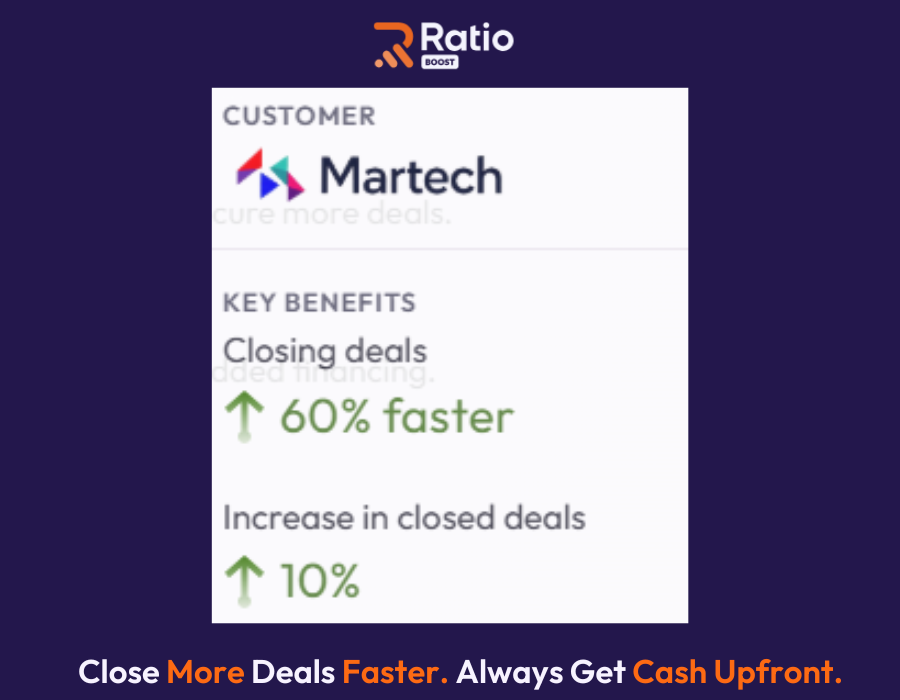
Must-Read: Pros and Cons of Upfront Payments in B2B SaaS Before You Ask Clients for It
✅ Third-party Underwriting and Credit Risk
A B2B BNPL provider should take full responsibility for assessing buyer risk and managing repayment. This protects the seller from bad debt, late payments, and the burden of accounts receivable management.
👉 With Ratio, underwriting happens instantly in the background, credit decisions are returned in seconds, and large deals are flagged for quick review without slowing the sales cycle.
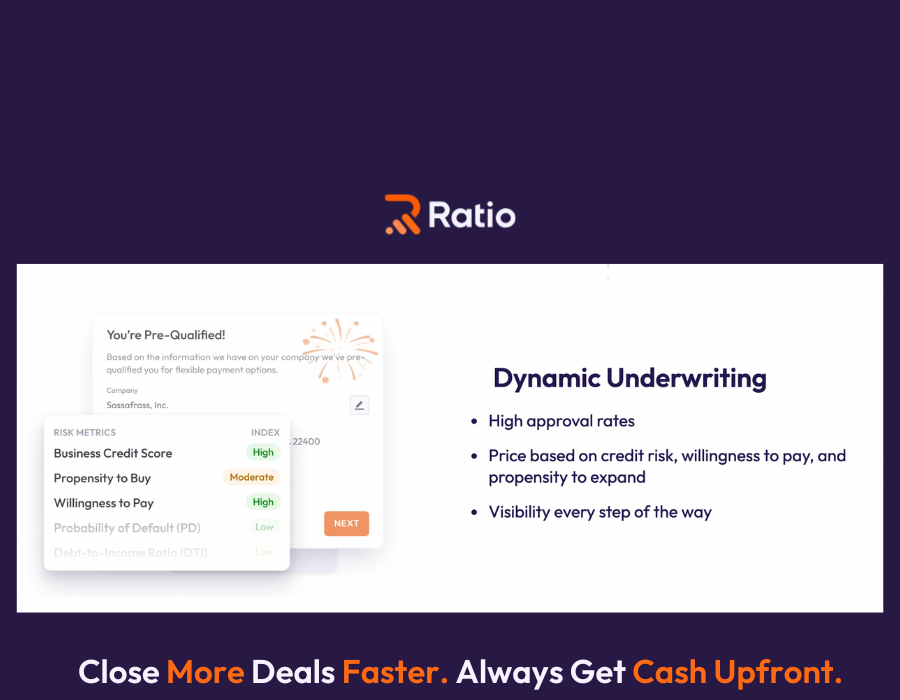
✅ Integration With Sales Technology Stack
The B2B BNPL solution should integrate directly with quoting tools, CRM systems, or digital checkouts. Sales teams must be able to offer flexible terms as part of their standard workflow without manual effort or external coordination. This helps reps move faster, reduce back-and-forth with other teams, and close more deals without friction.
Also read - The Best CPQ Software for SaaS Companies in 2025.
✅ Dynamic Payment Terms Configuration
SaaS sellers should have control over payment terms based on deal size, customer profile, and pricing strategy. This includes flexible durations, deferred billing starts, and risk-adjusted fees.
👉 In platforms like Ratio Boost, sales reps can propose pricing plans, but the system automatically adjusts them based on the buyer’s business health to minimize risk for the seller. This ensures terms are aligned with the buyer's financial profile, adding an additional layer of risk management and helping sellers maintain financial discipline at scale.
✅ Automated Billing and Collections
A B2B BNPL solution should manage billing, payment tracking, and collections automatically. This eliminates the need for manual processes, reduces operational overhead, and enables finance and RevOps teams to support growing revenue without increasing headcount.
✅ Real-time Visibility and Reporting
Sellers need instant access to deal status, payment flows, and buyer performance. Leading B2B BNPL platforms offer dashboards and exportable reports that integrate with finance and revenue systems. This visibility improves forecasting, supports confident financial planning, and helps reduce surprises in cash flow.
✅ Consistent Buyer Experience
The buyer-facing interface must enable fast credit checks, simple plan selection, and a clear approval process. This helps preserve sales velocity and reduces procurement friction.
See why SMBs stand to benefit the most from BNPL-enabled purchasing.
What Can Go Wrong: 4 Common Pitfalls When Adopting B2B BNPL
B2B BNPL often fails not because of the product, but because of how it’s implemented. When teams operate in silos or workflows are only partially integrated, small breakdowns compound. What starts as a flexible payment solution can quietly strain cash flow, erode margins, and increase operational drag when not implemented with the right guardrails.
This section outlines the most common execution failures and how to avoid them before they impact revenue.
1. Not All B2B BNPL Providers Are Created Equal
Many B2B BNPL platforms are repurposed from consumer checkout or small-ticket lending. They often lack the underwriting depth, approval workflows, and term flexibility required to support SaaS sales, especially when deals are complex, high-value, or multi-year.
What to check: Can the platform support six-figure contracts, multi-year terms, and custom payment structures that align with how your customers buy?
👉 Curious which BNPL platforms are truly built for B2B?
Read our B2B BNPL providers comparison guide to learn what to look for and why it matters.
2. Limited CRM or CPQ Integration
If your sales team has to leave the CRM to generate B2B BNPL offers, or if RevOps cannot reconcile those offers with pipeline activity, usage will drop, and adoption will suffer. Manual steps create friction, introduce errors, and slow down deal velocity.
What to verify: Does the platform integrate with your CRM, CPQ, and billing tools? Can your team track B2B BNPL offers like any other quote in your existing workflow?
3. A Clunky Buyer Experience
If B2B BNPL adds friction through extra forms, redirects, or unclear approval steps, it can derail deals late in the cycle. Procurement teams do not want a disjointed process. Sales teams cannot afford to lose momentum at the final stage.
What to evaluate: Is B2B BNPL fully embedded in your quoting flow? Does it feel consistent with the rest of your buyer experience?
👉 With Ratio Boost, there are no extra forms, no paperwork, and no redirect to a third-party portal. Buyers receive a personalized offer link, review clear payment options, and get approved in seconds, all without slowing down the deal.
Curious how B2B BNPL works in practice with Ratio? Read: How Does B2B BNPL Work? A Practical Guide for SaaS Sales Leaders
4. Sales Team Unpreparedness
B2B BNPL will not move deals unless your sales team knows when to use it, how to position it, and why it strengthens the deal rather than weakening it. Without that clarity, reps default to discounts or skip the option entirely.
What your team needs: Clear triggers, simple messaging, and use-case examples that show B2B BNPL as a revenue accelerator, not a fallback.
Avoiding these pitfalls turns B2B BNPL into a revenue driver rather than another source of friction.
How to Choose the Right B2B BNPL Provider
One SaaS company selling annual contracts was offering discounts of up to 55% to close deals. Without payment flexibility, sales cycles dragged on, margins declined, and defaults increased. After adopting B2B BNPL provider Ratio Boost, they closed deals 60% faster, increased conversions by 10%, and collected the full contract value upfront without discounting.
That’s the power of having the right infrastructure behind your SaaS sales. A purpose-built B2B BNPL provider gives you speed, predictability, and control from quote to cash.
The checklist below outlines six capabilities every B2B BNPL provider must meet to support SaaS sales at scale.
1. Guaranteed Upfront Payment, No Exposure to Risk
Your provider should pay 100% of the contract value at close without delays, partial payouts, or shared liability. If cash isn’t immediate and guaranteed, B2B BNPL becomes just another collections risk, not a growth lever.
🎯 Want to see what you could unlock with BNPL?
Try the Ratio Cash Simulator to estimate how much upfront capital you can unlock from your existing ARR.
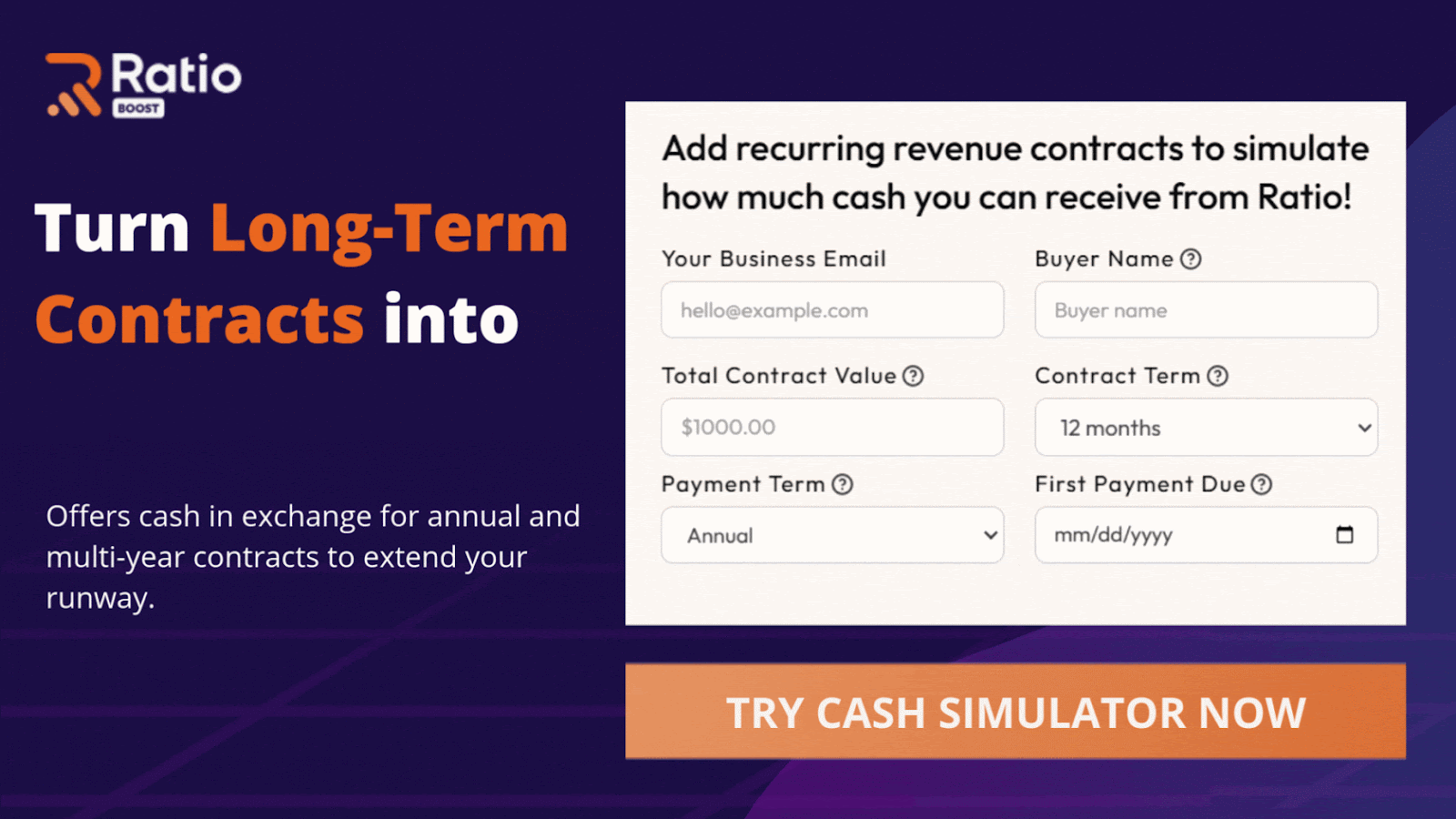
2. Seamless Integration Into Your Sales Workflow
B2B BNPL must fit directly into your CRM, CPQ, or checkout tools. Reps should offer flexible terms without leaving their workflow or triggering manual steps. If it adds friction, adoption will stall, and close rates will suffer.
3. Configurable Payment Terms to Match Deal Strategy
You should control payment duration, billing frequency, and start date based on deal size, buyer profile, or pricing strategy. Rigid structures limit your flexibility and reduce win rates in complex sales cycles.
4. Transparent Pricing Model With Clear Margin Impact
Know exactly who pays, how much, and when. Whether it’s a platform fee, discount, or buyer interest, you should be able to forecast the margin on every deal without guesswork or hidden costs.
5. Ownership of Billing, Collections, and Compliance
B2B BNPL should reduce operational drag, not add AR and compliance tasks. The provider must manage buyer onboarding, invoicing, collections, and regulatory risk from end to end.
6. Real-time Visibility Into Cash Flow and Buyer Performance
Live dashboards should show funding status, repayment progress, and buyer risk insights. That data should flow into your finance tools to support cash forecasting, reconciliation, and renewal strategy.
Most B2B BNPL tools were not built for SaaS. They fall short on recurring billing, integrated sales workflows, and instant deal approvals. Instead of accelerating revenue, they introduce friction where it hurts most.
That is the gap that Ratio Boost was built to close.
Why SaaS and Technology Leaders Choose Ratio Boost for B2B BNPL
Ratio Boost is purpose-built for SaaS and technology sales teams that need to offer flexible payment terms without slowing down deals, weakening pricing, or adding AR complexity.
It’s not a repackaged consumer BNPL tool. It’s a revenue infrastructure layer that gives your team speed, certainty, and control from quote to cash.
Here’s why Companies like Barkibu use Ratio Boost:
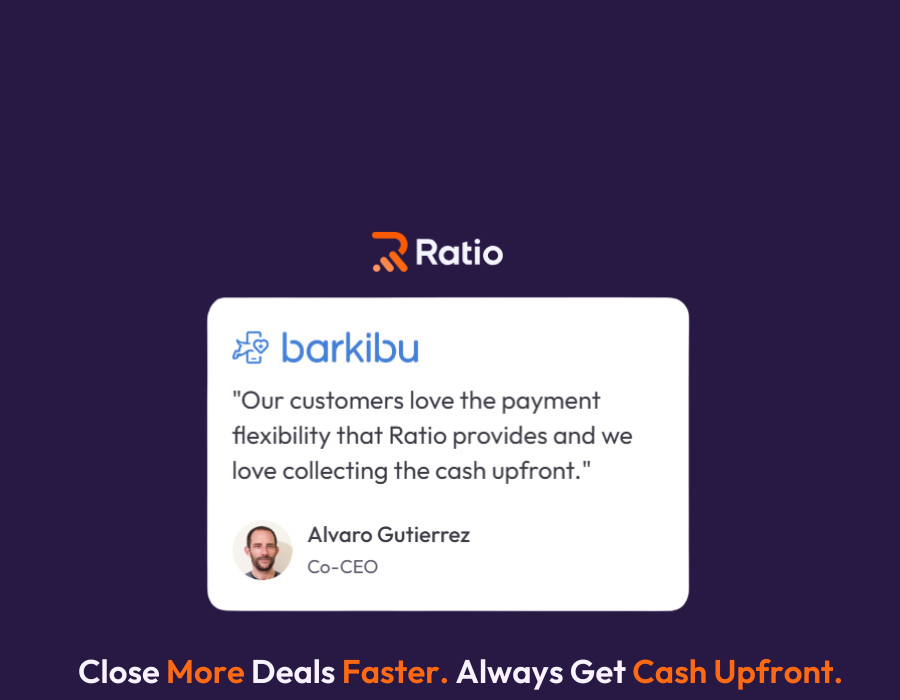
🔹Full contract value, paid upfront
Ratio pays 100% of the contract value at deal close, with no installments, no repayment risk, and no reliance on buyer collections. The cash lands in your account instantly.
🔹Embedded directly into your sales stack
Ratio integrations connect with your CRM, quoting tools, and CPQ systems so reps can offer B2B BNPL terms with one click without leaving their sales motion—no portals, no extra steps, no friction.
🔹Configurable terms without discounting
Tailor term length, deferral periods, and cost pass-through logic per deal without eroding price. B2B BNPL becomes a sales lever, not a concession.

🔹Capital-backed scale
Ratio is backed by a $411M funding pool to support fast, consistent deal funding at scale from $10K SaaS contracts to multi-year enterprise agreements.
🔹AI Copilot for deal optimization
Launching soon: Ratio’s AI Copilot recommends the ideal financing structure per deal, using buyer profile, risk model, and historical data to help sales and finance teams close faster and smarter.
💡Proven Impact: DearDoc, a healthcare SaaS platform, used Ratio Boost to offer flexible payment terms on annual contracts. Within 6 months, they increased the average selling price by 25%, improved close rates by 20 to 30%, and reduced sales cycles from days to under 45 minutes, unlocking millions in upfront capital to reinvest in growth.
|
“Ratio Boost isn’t just another BNPL tool. It’s transformed how we sell. The results have been extraordinary and we’re just getting started.” — Joe Brown, CEO @ DearDoc |
Stop losing momentum after the “yes.”
Ratio Boost enables you to offer flexible terms, receive upfront payment, and close deals faster, all directly from your CPQ or CRM. Book a live demo to see it in action.
B2B BNPL FAQs: What B2B SaaS and Technology Sellers Still Want to Know
1. What does B2B BNPL with Ratio Look Like?
B2B BNPL with Ratio is built directly into your sales workflow. Reps create offers inside your CRM, configure custom payment plans, and send buyers a personalized link to select terms, sign, and pay in one unified process.
Ratio underwrites buyers in real time, handles approvals instantly, and disburses the full contract value upfront to your business. There is no paperwork, no manual billing, and no collections overhead. Your team stays focused on closing while Ratio manages everything from credit checks to repayments.
It supports multi-year contracts, usage-based pricing, and ramp deals without requiring changes to how you quote or sell.
👉 Want to see how it fits into your sales motion? Read: How Does B2B BNPL Work? A Practical Guide for SaaS Sales Leaders
2. How Is B2B BNPL Different from Traditional Net Terms or Payment Plans?
Traditional payment terms delay cash flow, increase risk, and burden your team with manual work. B2B BNPL with Ratio eliminates these bottlenecks by embedding financing directly into your sales motion. Here's how they compare:
| Category | Traditional Net Terms / Payment Plans | B2B BNPL with Ratio |
|---|---|---|
| Cash Flow | Seller waits 30–90+ days to get paid | Full contract value paid upfront within days |
| Risk Exposure | Seller bears credit and collection risk | Ratio assumes 100% of repayment and default risk |
| Workflow Integration | Managed manually or outside the sales process | Embedded in CRM and CPQ; reps send offers from one system |
| Underwriting | Informal or nonexistent | Instant, automated business credit checks via EIN |
| Operational Overhead | Requires internal billing, reminders, and AR | Ratio automates billing, reminders, and collections |
| Buyer Experience | Disjointed, slow, and often needs finance approval | Self-serve, digital, fast approval with flexible options |
3. What Types of SaaS Deals Benefit Most from B2B BNPL?
B2B BNPL is most effective in deal scenarios where traditional payment terms create friction. These include:
- Annual and Multi-Year Contracts
Larger contracts often stall due to budget timing. BNPL allows buyers to spread payments without requiring upfront capital, enabling you to close faster without offering discounts. - Complex Pricing Models
Deals with ramp, tiered, or usage-based pricing often don’t fit traditional financing. Ratio supports these structures while still paying you upfront and managing buyer repayments. - Enterprise and Procurement-Led Sales
Large organizations often involve longer cycles, stricter approvals, and pressure to reduce upfront costs. BNPL removes payment objections early and simplifies internal buy-in without compromising price.
4. Who Are the Top B2B BNPL Providers for SaaS and Technology Sales?
Several B2B BNPL providers serve the market, but their capabilities vary based on deal structure, sales motion, and product complexity. If you're selling SaaS or technology solutions, it's essential to select a platform that aligns with your pricing, quoting, and closing processes.
Some of the leading providers include:
- Ratio Boost
- Capchase
- Resolve Pay
- Mondu
👉Have more questions about B2B BNPL? Check out our answers to the 10 most asked questions about B2B Buy Now, Pay Later.








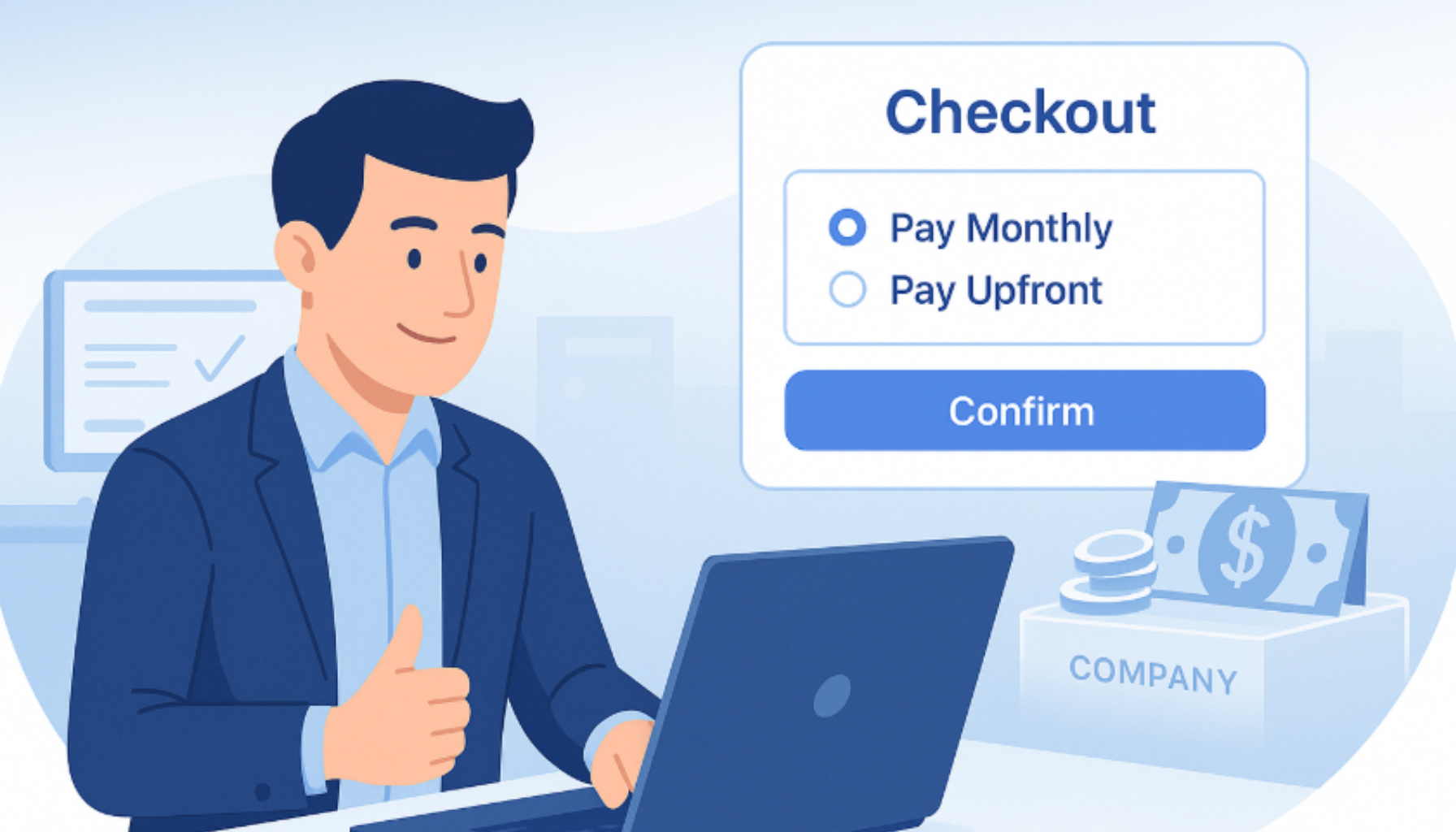
.png)


